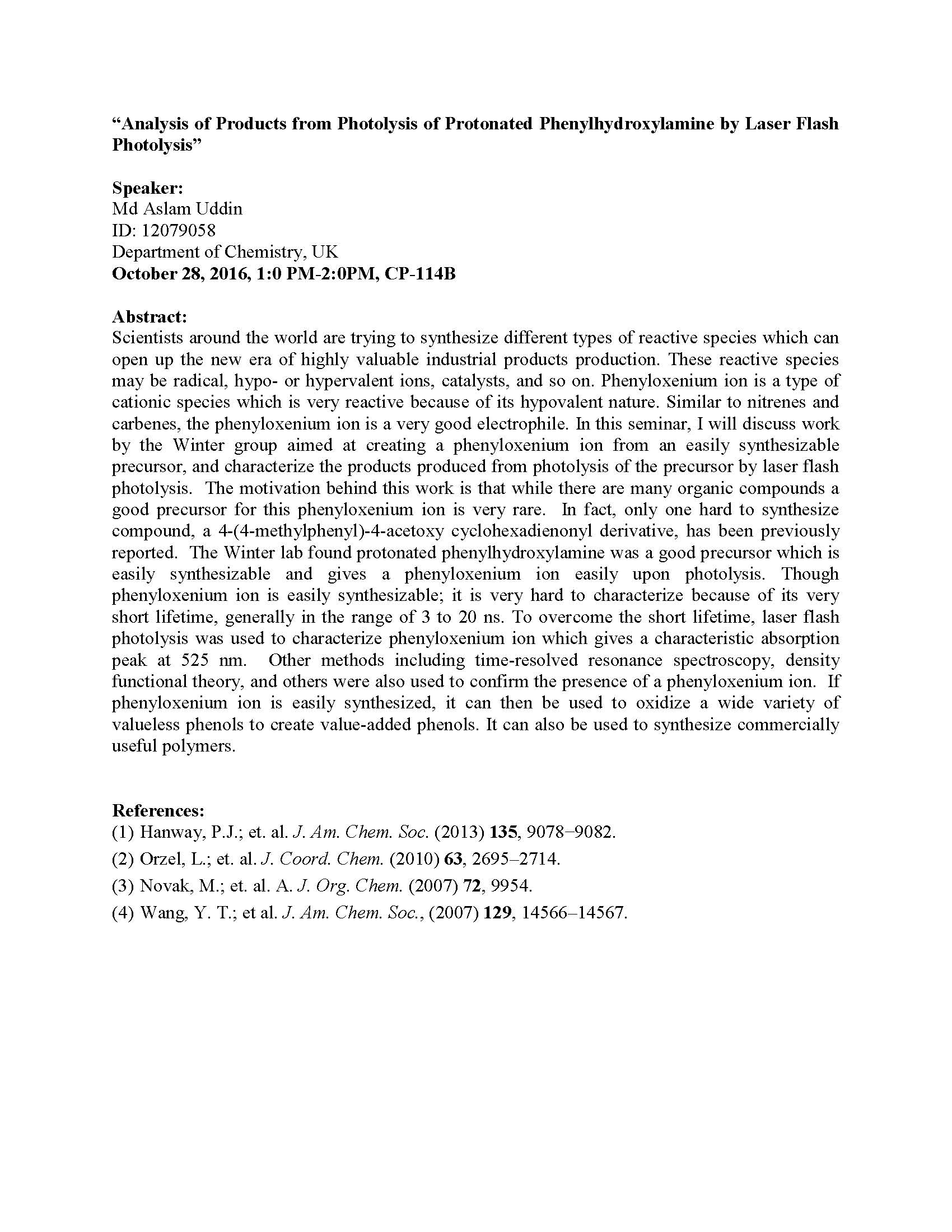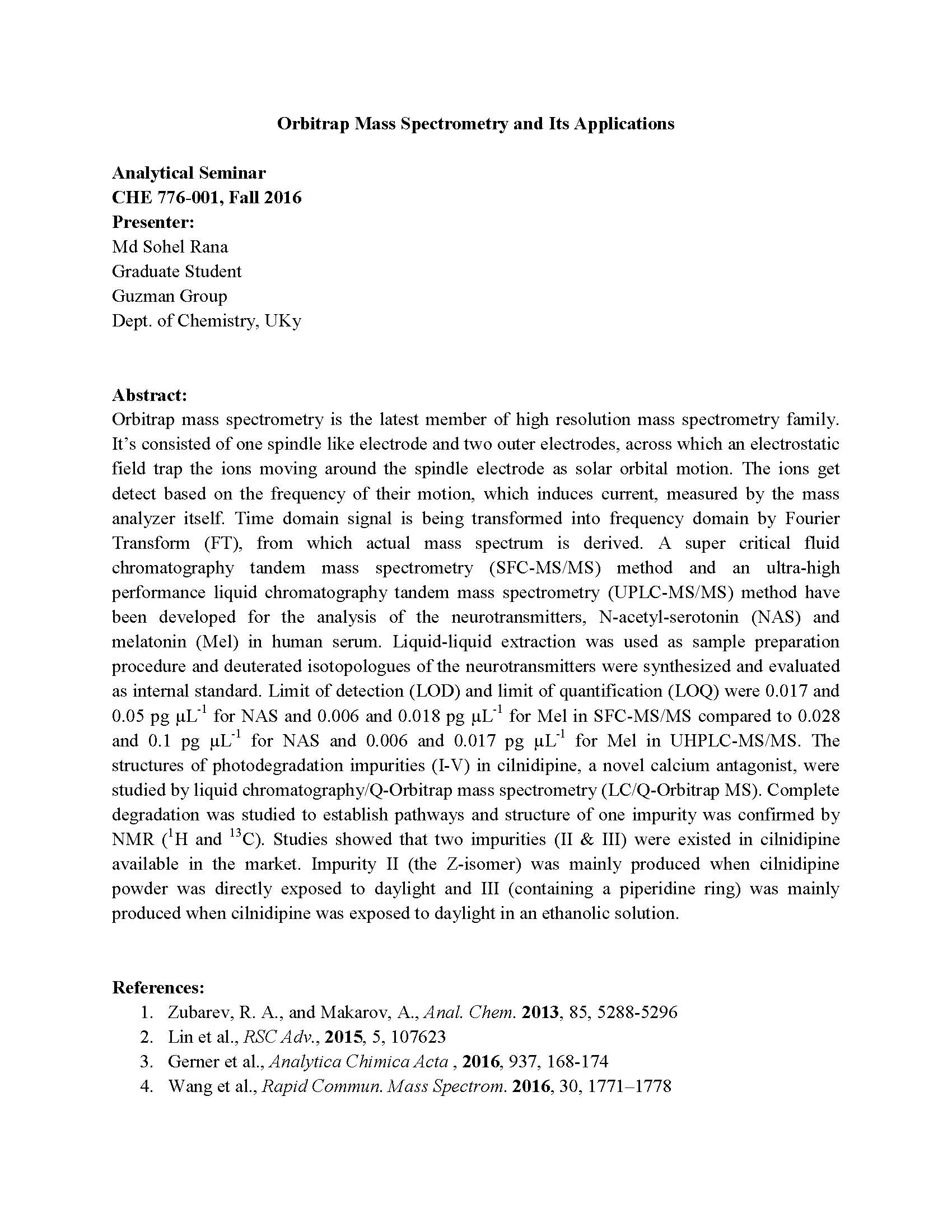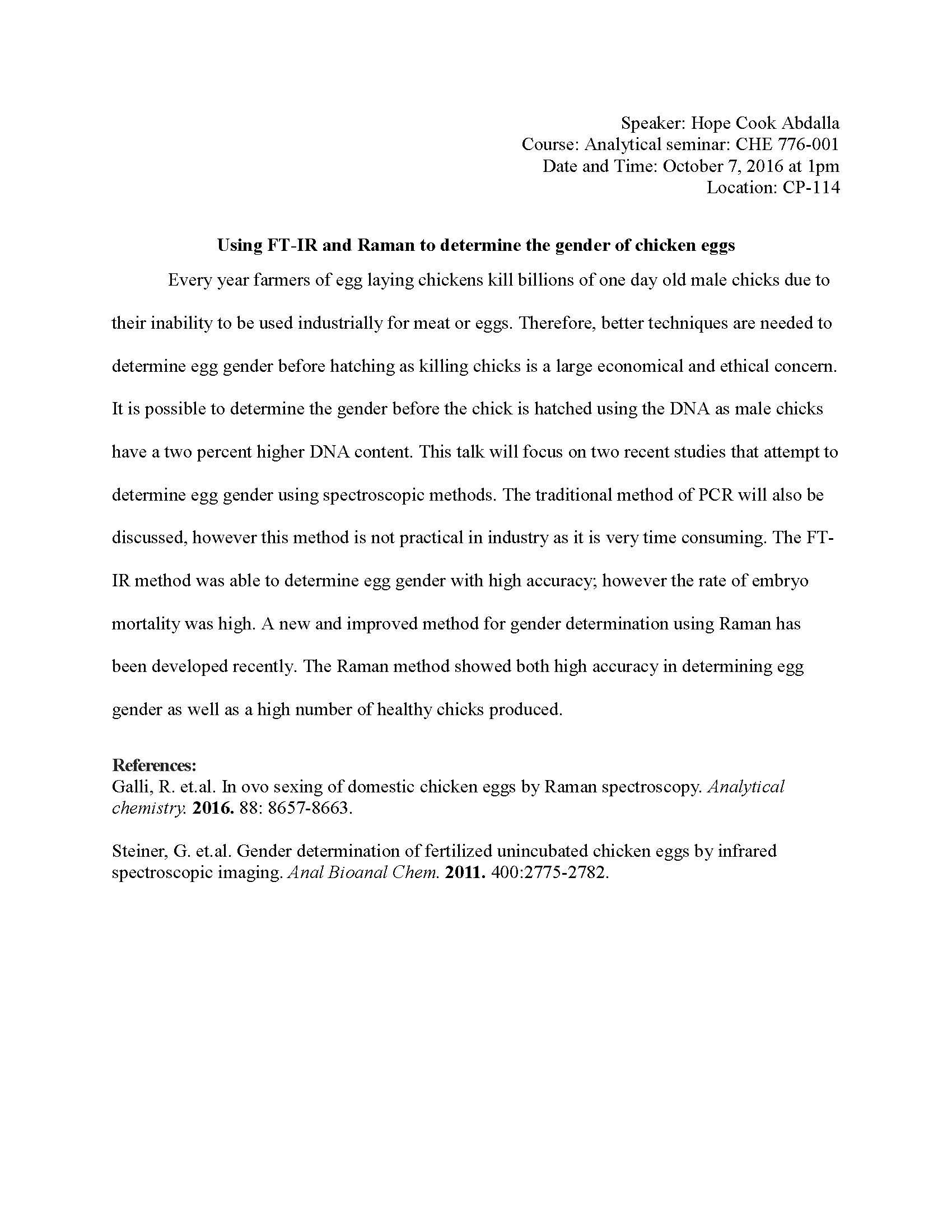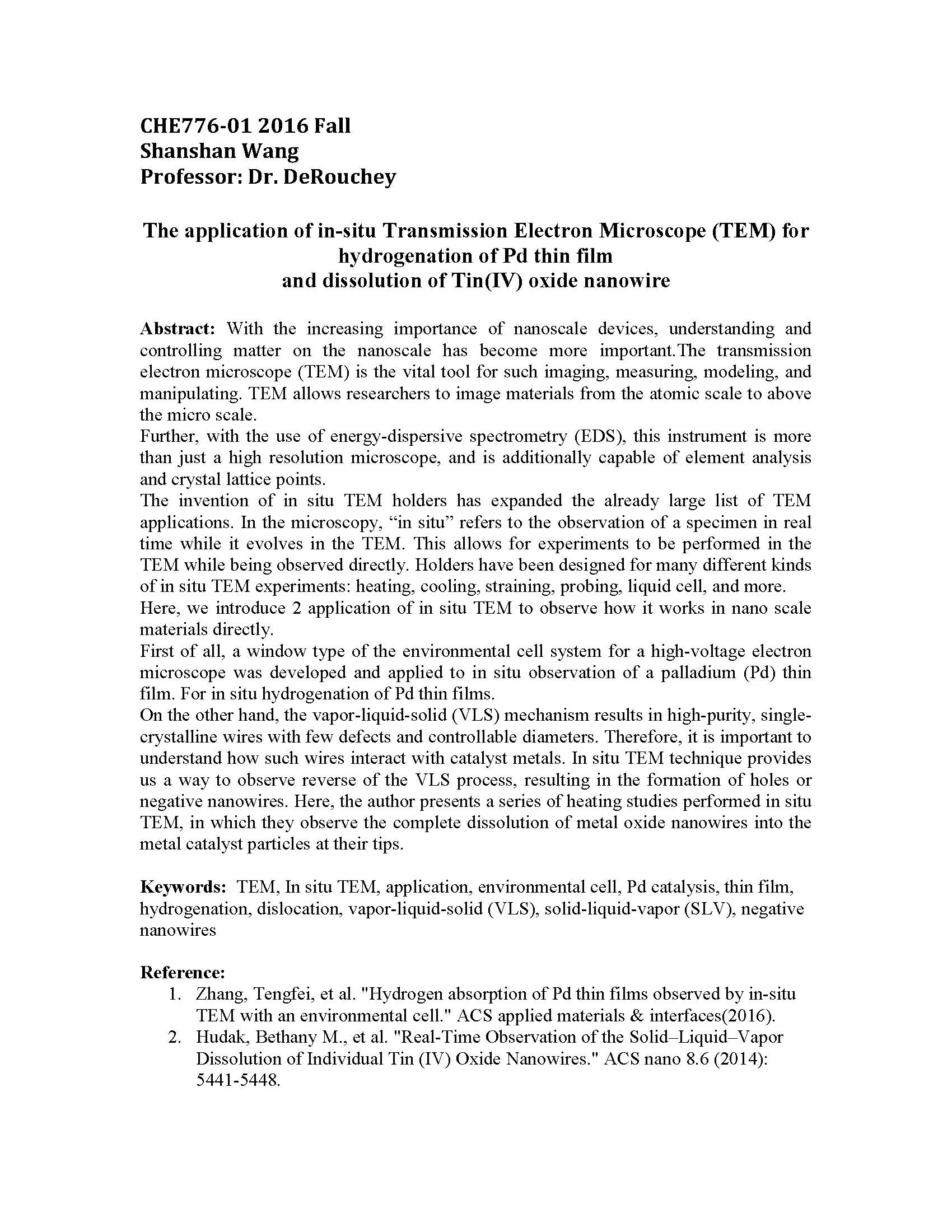Analysis of Products From Photolysis of Protonated Phenylhydroxylamine By Laser Photolysis Experiments


Fluorescence Microscopy: Applications of Fluorescence Recovery after Photobleaching to protein transport in living cells.
By:
Shardrack Asare
Abstract
Fluorescence recovery after photobleaching (FRAP) is a non-invasive analytical technique that utilizes a confocal microscope and green fluorescent protein to study the rate of diffusion and dynamics through tissue or cells. In most FRAP experiments, proteins tagged with green fluorescent protein (GFP) is illuminated with a laser source, causing a bleach of the GFP but not the protein’s function, the rate of protein diffusion can then be determined by photobleaching a specific area of the cytoplasm and measuring the rate of fluorescence recovery. In this talk, we will discuss the use of FRAP to measure the mobility of GFP-tagged Sup35p in its non-prion form in [psi-] and its prion form in [PSI+] cells. In conclusion, FRAP has successfully been used to measure aggregation state of [PSI+], and this has giving a better understanding of the mechanism of prion curing by guanidine hydrochloride (Gdn).
References
Wu et al, Methods 2006. 39 (1) 43-49
Moran-Miraba, M. J. Cellulose 2013. 20 (5) 2291-2303
Luu et al, The Plant J. 2012. 69, 894–905



Surface Enhance Raman spectroscopy and its applications in prostate cancer diagnosis
Speaker: - Thilini Abeywansha
September 9, 2016, 1.00 pm-1.50 pm, CP 114B
Prostate Cancer is a main cause of death among the American male population. Over ten billion USDs are spent to treat prostate cancer patients per year in the USA. Current remedies for this disease include surgery, chemotherapy, radiation therapy etc. which are not efficient and have adverse side effects. An alternative treatment called photo thermal therapy for prostate cancer has been recently introduced by researches. This technique uses elevated temperatures to destroy cancer cells. Progress of this method can be effectively monitored by Surface Enhanced Raman Spectroscopy (SERS).
This seminar will focus on a SERS technique associated with popcorn-shaped gold nano particles which are specially designed to target human prostate cancer cell line LNCaP. This technique can be used to obtain enhanced Raman spectra of cancer cells aggregated with popcorn-shaped gold nano particles. And also, destruction of cancer cells during Photo-thermal therapy can be monitored using this technique. The results indicate that SERS provides significant enhancement to Raman signal intensity which makes it a highly sensitive technique to study cancer cells.
References